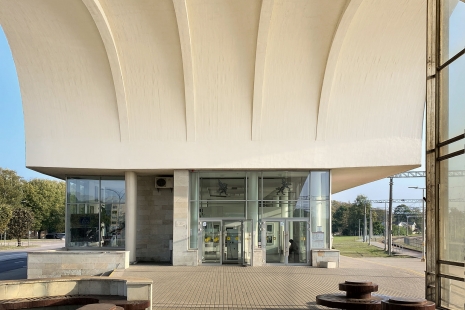For fifteen days from April 21st until May 5th artist Thomas Hirschhorn will be working in Art Station Dubulti from 9am to 6pm. It will be both an artwork and a workshop-space. A sculpture and a presence. The artist will lead a workshop-session every day: a critical workshop “Energy=yes! Quality=No!”. “As an artist I refuse to adopt the term ‘quality’ for my work and I don’t want to apply it to the work of others. Each participant brings an input, a work, something coming from her/himself: a text, an original-painting, a drawing, a song, a collage, a sculpture, a video or anything else. The participant chooses this work – only one – with the idea that it will be discussed according to the criteria Energy: Yes! Quality: No!,” explains Hirschhorn. Daily lectures, presentations and discussions will take place in the improvised broadcasting studio that will be a part of ART=SHELTER.
The curator of the Art Station Dubulti Inga Steimane states: “Aggression is one of the most serious crimes under contemporary law and the prohibition to use force is a norm. Russia’s invasion of Ukraine has created worldwide erga omnes obligations – everyone is responsible for stopping the war. What can an art institution do? Will it be able to use its competencies effectively meanwhile not looking infantile?
For three decades Thomas Hirschhorn’s art has involved criticism as well as predictions of our political and social environment – that it’s fragile because of exclusions, traditional ideas of identity and difference. In his latest work Thomas Hirschhorn creates a public space and situation where people can spend time and produce something, have dialogues and acquaintanceships. He has his own way of working politically – eye to eye with individuals, the method typically regarded as “unrealistic”.
Utopianism is equally proposed by Hirschhorn’s form – dimensionless and site-subversive sculpture made out of industrial, non-exclusive and not intimidating material, without time restrictions in production or perception.
The source of his sculpture is subjectivity. He chooses materials that everybody uses and knows, because he is against construction of the subject as a lay person or nonprofessional.
Much like Deleuze reveals the logic of the senses as the basis of the constitution of humanity, Hirschhorn sees his residential sculpture as the form constituted by his intuition and proceeded intuitively by the audience as a new world where life is liberated vitality.
Living through the Ukrainian war and facing collapses of concepts, structures and qualities regarded unquestionable until recently, including the art programme made months ago, Thomas Hirschhorn’s empiricism seems reliable to stand with moral duties.”





